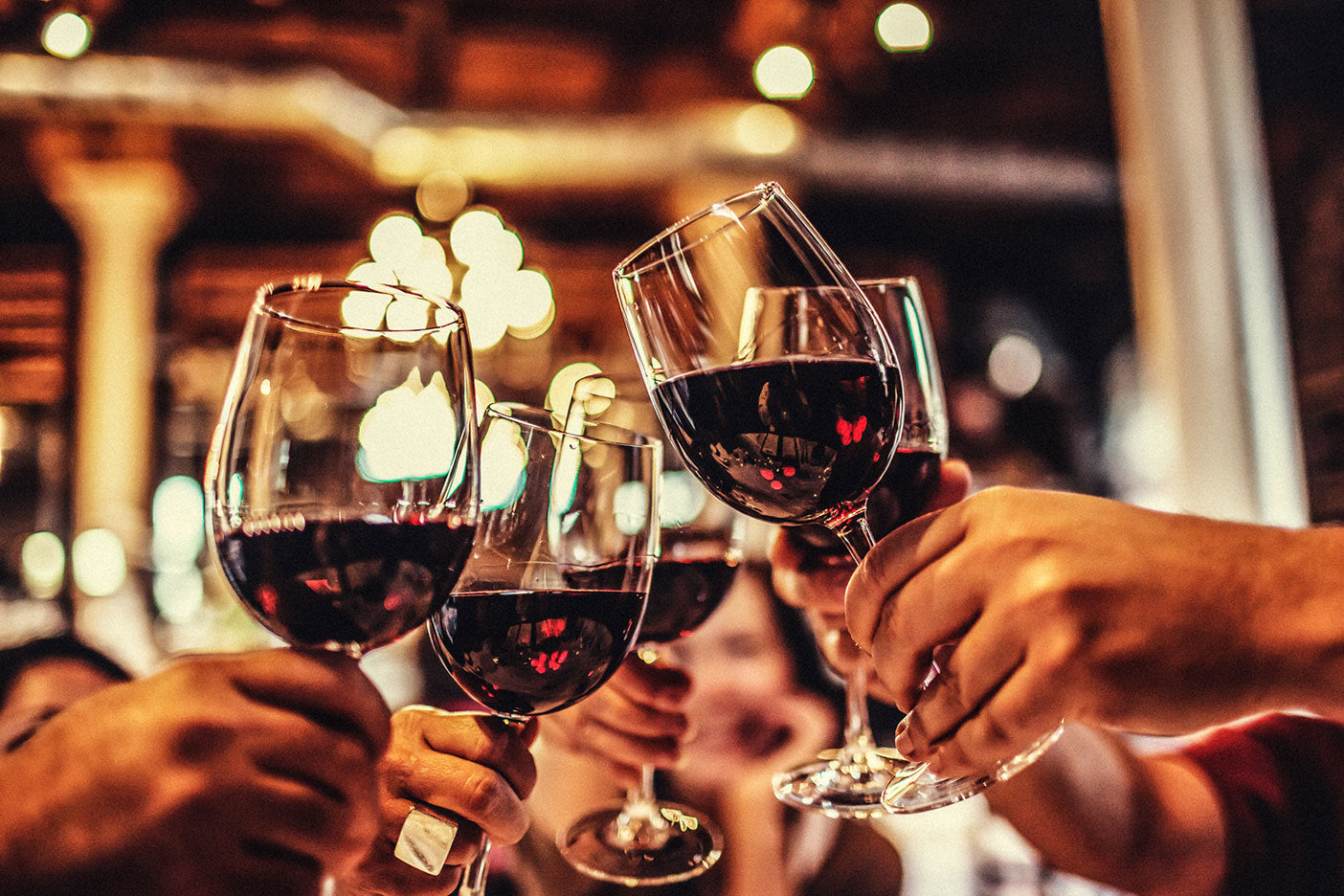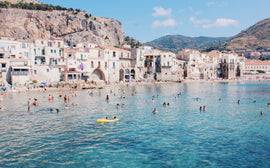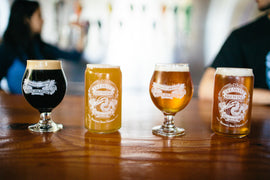What is it that makes wine so compelling? Some say alcohol is a depressant acting on the nervous system in a similar way to some tranquilizers, and in moderate amounts can create a feeling of contentment and cheerfulness. Well, that should be compelling enough! After all, what’s wrong with feeling content and cheerful? Is it possible to tire of the wonderful flavors the world of wine offers? When it comes to exploring flavors, it’s hard for me to imagine any other beverage that offers so many options from so many places. So, maybe it’s the delicious flavors assaulting my organoleptic senses, or wine’s tranquilizing effects, but most likely it’s the combination of the two that compels me to seek out new wines. Our wines this month come from regions with a long wine-making history, but the wines from the Côtes de Blaye in France or Villány in Hungary are not often seen on many wine lists or grocery shelves. Our two quality producers featured this month are making wines with minimal intervention, bringing out the best flavors of their grapes and displaying the uniqueness of the terroir. Pop the corks, read their stories, enjoy the flavors, and delight in that wonderful feeling of contentment and cheerfulness that will follow.
2017 Château Peybonhomme-Les-Tours “Le Blanc Bonhomme”
Blaye Côtes de Bordeaux AC
Bordeaux, France
Situated on the mid-Atlantic coast of France around the Gironde River, Bordeaux is home to some of the most legendary wines on earth. While most wine drinkers may know of the great appellations within Bordeaux, they may be unfamiliar with the wines from the Côtes de Bordeaux. This hilly appellation, located on the Right Bank, was first formed in 2009 with the union of four regions: Côtes de Blaye, Côtes de Castillon, Côtes de Francs and Côtes de Cadillac. In 2016, Sainte-Foy Bordeaux joined the group. Together, they cover nearly 30,000 acres of vines, and represent 10 percent of the total production of Bordeaux. While each appellation has its own distinct terroir, they do have similarities, particularly their long history, their hilly landscape and their closeness to the Gironde, Garonne and Dordogne rivers, which affect their climates.
Côtes de Blaye is by far the largest region of the five in the Côtes de Bordeaux appellation. Due to its large size, Cotes de Blaye features a wide and diverse array of terroirs and soils that range from limestone and clay on the hillsides, to soils with more gravel, sand and chalk at the bottom of the slopes and on the flats. The modern era for the Cotes de Blaye starts in 1936, when the AOC created the appellation. At that time, the area of Blaye was divided into three separate appellations, Blaye, Côtes de Blaye, and the best wines of the area, due to their more prestigious terroir, were placed into a separate appellation, Premiers Côtes de Blaye. Today, the appellation title Blaye Côtes de Bordeaux applies only to wines made specifically in the Blaye district, just across the Gironde from the Medoc. The production of white wine accounts for only 10% of the wine produced within the Blaye Côtes de Bordeaux appellation. Vineyards are planted to Sauvignon Blanc, Semillon and other various grapes that are uncommon for Bordeaux—Ugni Blanc, Merlot Blanc, Folle Blanche, Colombard, and even Chenin Blanc. Colombard and Ugni Blanc are the two most popular.
Jean-Luc Hubert is descended from a long line of sailors who navigated the Gironde in the famous ‘scow’ boats and specialized in wine transportation. Catherine, his wife, comes from a family of winemakers. Their ancestors on both sides worked together, one transporting the other’s wines, unaware that the two families would unite for their shared future.
Catherine’s great-grandfather acquired Château Peybonhomme-les-Tours in the northern right bank of Bordeaux in 1890, when it was classified as a ‘Premier Cru Bourgeois’. The estate is located on a hill overlooking the Gironde estuary, with their vineyards on the slopes of what is said to be the best limestone and clay soils of the region. Jean-Luc and Catherine are the fifth generation in Catherine's family to own and operate Château Peybonhomme-Les Tours. Now joined by their son, Guillaume, and daughter, Rachel, they farm the estate themselves, and are the largest certified biodynamic estate in the region.
Château Peybonhomme-les-Tours’ “Le Blanc Bonhomme” is composed of 50% Sauvignon Blanc and 50% Semillon. The grapes are handpicked very early in the morning in small crates to preserve freshness. The bunches are manually sorted and undergo a 24-hour carbonic period before being pressed into concrete vats. Fermentation is done using yeast native to the estate, with 40% fermented in new barrels, the remainder in concrete vats. Maturation lasts for six months with regular lees stirring. Minimal sulphur is added to the must, and bottling occurs on a fruit day of the biodynamic calendar.
Château Peybonhomme-les-Tours’ 2017 “Le Blanc Bonhomme” has an impressive amount of depth and complexity for a wine in its price point. Fresh, citrus acidity balances perfectly with the tropical fruits and subtle creamy notes. It has a deliciously enticing spicy, mineral finish that is smooth yet bright. Pair it with Veax paupiette, which is a traditional dish served in Blaye. It is veal sliced thin, then stuffed with any kind of sweet or savory filling. Other local dishes such as duck rillette with cornichons, slow-cooked lentils with mild sausages, or any of your favorite seafood or chicken dishes will be delicious with a glass of Le Blanc Bonhomme.
The 2017 Château Peybonhomme-les-Tours “Le Blanc Bonhomme” is $26.00/bottle, $280.80/case.
2015 Jackfall Winery
Cabernet Franc
Villány, Hungary
The earliest records of viticulture in what is today Hungary date back to Roman times, however archaeological finds suggest that the Celts were already involved with grapes, whose cultivation had spread from ancient Greece. Once settled, Hungarian tribes increasingly turned to agriculture, which afforded a more secure living than nomadic animal husbandry. In the early days, they planted vines even in flat land and flood plains, sometimes allowing them to climb up the trees at will. After the foundation of the Hungarian Kingdom, viticulture was concentrated on the estates run by the church around the major settlements. By the end of the 14th century, the major wine regions had mostly taken shape as we know them today. Today, Hungary has 22 officially designated wine regions. These include a number of regions of historic repute throughout Europe. Somló, Badacsony, Tokaj, Mór, and Balatonfüred-Csopak have been known across the continent for their white wines, while Szekszárd, Eger, Sopron and Villány have distinguished themselves with their reds.
The official wine region of Villány currently encompasses the vineyards around 16 communities. The vineyards occupy a 25-kilometer-long strip on the southern slopes of the Villány Hills, a range of east-west orientation that dramatically rises out of the surrounding plain. The predominantly calcareous bedrock of the hillsides is overlain by loess and clay of variable thickness, with a rather high concentration of lime. In several locations, vines are cultivated even on the plateaus, where the predominant soil is rendzina, a type of black turf. Villány’s modern wine culture goes back to the German-speaking settlers sent there in the 1700’s by Maria Theresa. Many of the descendants of these settlers still live in the region. Winemaker József Bock was actually born in the house where the Jackfall Winery is located today. He became one of the pioneers of modern-day Hungarian winemaking in the 1990’s after the fall of Communism.
Jackfall Winery is a 13.5-hectare estate founded in 2001 by Gábor Jandrasics and Sára Elek. Their winemaker is András Kőszeli. The winery gets its name from the Swabian (medieval county of southwestern Germany) name for the village of Kisjakabfalva (“Jackfall”) in Villány, where the estate is located. Jackfall produces about 100,000 bottles of wine annually in a wide range of styles from light Chardonnay and crisp rosé to elegant Portugieser and heavier reds like Cabernets and Merlots.
Hungary accounts for just 2% of world Cabernet Franc plantings with 1,300 hectares of vines, of which about a quarter are in Villány. The fruit for the Jackfall 2015 Cabernet Franc comes from the vineyards Bocor in Kisharsány and Pillangó in Nagytótfalu, between the villages of Villány and Siklós. The soil there is mostly loess mixed with red clay and brown forest soil on a bed of limestone rock. The vines are between 10-15 years old. Following manual harvesting, the grapes were gently pressed and then fermented in open vats. Fermentation was spontaneous with native yeasts, and once fermentation was complete, the wine was aged in old 220 and 500 L Hungarian barrels (75%) and stainless-steel tanks (25%) for 12 months. A minimum amount of sulfites were added.
Jackfall has taken all the best influence from Loire Cabernet Franc and combined it with a real intensity. Their Cabernet Franc balances ripe blackberry fruit with tangy, crunchy cranberry, pepper, herbs, charcoal and smoke with cocoa hints and warm wood tones. While very drinkable now, it will get even better over the next few years. A glass of Jackfall’s Cabernet Franc goes beautifully with regional dishes such as Gulyás (goulash,) a popular Hungarian soup containing chunks of beef, potatoes, and vegetables, plus plenty of paprika and spices, Töltött Káposzta (stuffed cabbage,) large leaves of cabbage stuffed with meat and rice, which are cooked and then smothered with sour cream, or Paprikás Csirke (chicken paprikash,) chicken in a creamy paprika sauce, often served with sour cream.
The 2015 Jackfall Cabernet Franc is $26.00/bottle, $280.80/case.





